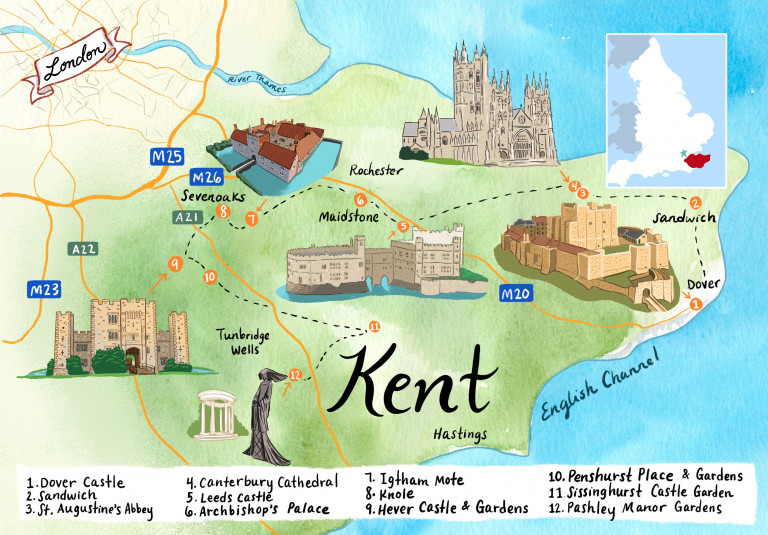Ambrose Dudley, 3rd Earl of Warwick
Tudor Tomb:
Name and Title: Ambrose Dudley, 3rd Earl of Warwick
Born: c 1530
Died: 21 February 1590.
Buried: The Beauchamp Chapel, St Mary’s Church, Warwick.
Read more and see images and a video of the tomb here…

Tudor Tomb:
Name and Title: Ambrose Dudley, 3rd Earl of Warwick
Born: c 1530
Died: 21 February 1590.
Buried: The Beauchamp Chapel, St Mary’s Church, Warwick.
Read more and see images and a video of the tomb here…

Venturing out of the city of London, we travel to Canterbury, Kent. An important medieval city, The Tudor Travel Guide explores the city’s sixteenth century history, providing inspiration for your next Tudor road trip to Canterbury.
Let’s go…!

In this guide, we travel to Stratford-Upon-Avon, birthplace of William Shakespeare, to visit some of the best Tudor places in the area.

Tudor Tomb:
Name and Title: Robert Dudley, 1st Earl of Leicester
Born: 24 June 1532
Died: 4 September 1548.
Buried: The Beauchamp Chapel, St Mary’s Church, Warwick.
Read more and see images and a video of the tomb here…

The 1502 Progress of Henry VII and Elizabeth of York, continued…
Having stayed overnight at Over, the royal party continued their journey the following morning, 13 August. The cavalcade was heading south-west towards another overnight stop, this time at Flaxley Abbey.

In this episode, I head to South Yorkshire to visit Sheffield Manor Lodge. During the sixteenth century, Sheffield Manor Lodge was a luxurious hunting lodge belonging to the powerful Earls of Shrewsbury. Unfortunately, much of the building’s fabric has since been lost to time. The only structure to remain entirely intact is the Turret House, which sits alongside the ruins of the rest of the manor house.

In this guide, we travel to Kent on a packed six-day itinerary from east to west, visiting some of the best Tudor places the county has to offer.

In this episode, I head to the county of Derbyshire to visit Hardwick Hall. One of the best-known and most magnificent Prodigy Houses in England, Hardwick Hall was built by Bess of Hardwick. A remarkable figure in the sixteenth century, we discover more about Bess and the story of this Tudor treasure trove.
I’m joined by Liz Wearing, Property Curator at Hardwick Hall as we explore this jewel of the late Elizabethan age.

Name and Title: Katherine Parr (she signed her letters Kateryn Parr), Queen of England.
Born: Blackfriars, London, c.1512.
Died: 5 September 1548.
Buried: Sudeley Castle Chapel, Winchcombe, Gloucestershire.
In this blog we explore the life, death and burial of Queen Katherine Parr…

Name and Titles: Thomas White, Mayor of Tenby
Born: unknown
Died: 8 May 1483
Buried: St Mary’s Church, Tenby, Pembrokeshire.
In this blog we explore the life, death and burial of Thomas White